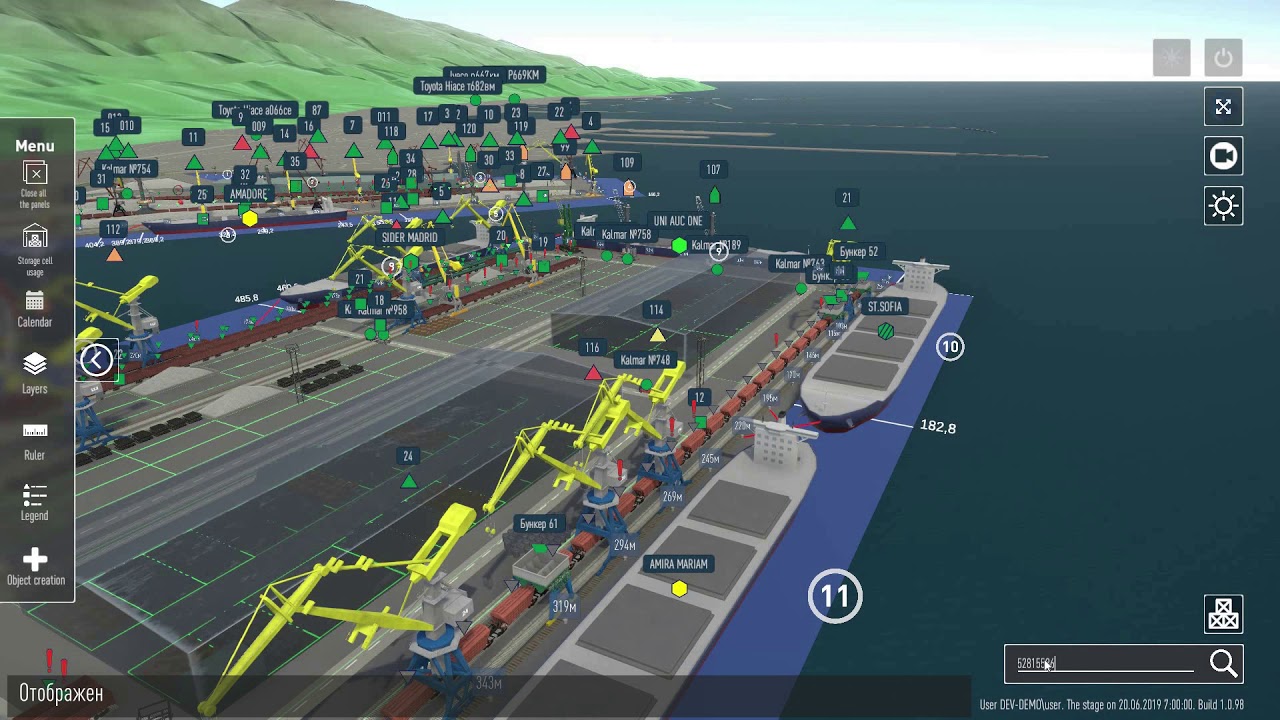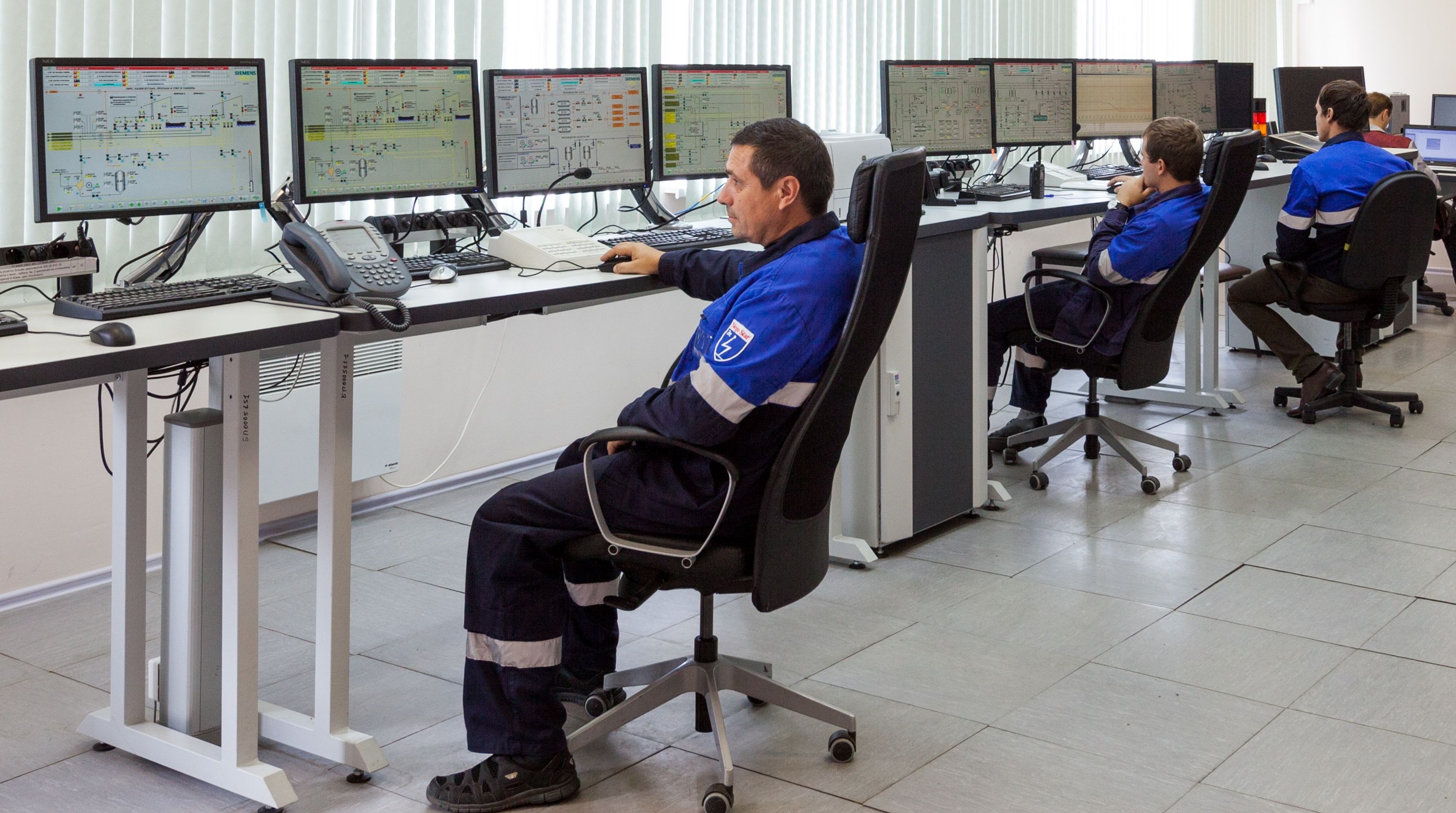
One of the key focuses of the Russian Transport Strategy until 2030 is the port industry digitalization. Experts see the prospects in creation of smart ports involving artificial intelligence, the Internet of things and augmented reality. IAA PortNews article tells about how Russian stevedores cope with it.
The port business of Russia has recovered from the shock of sanctions rather quickly and it has even gained a profit, although a slight one. According to Rosstat, cargo throughput of Russian seaports grew from 552.9 million tonnes in the first 8 months of 2021 to 553.3 million tonnes in the same period last year, up 0.7%, year-on-year. This happened particularly due to the eastward shift of operations.
As of today, seaports in Russia account for up to 80% of foreign trade traffic. In the conditions developed over the past year, transport logistics, a complex sphere as it is, has to adjust at a phenomenal speed. It is currently interested in digital transformation almost more than other sectors.
Hi-tec ports
The process of digitalization was launched in foreign seaports in 1993 with the first use of unmanned machinery for handling of containers in the sea harbor of Rotterdam. Today, two full-fledged smart clusters operate in China - container terminal Ocean Gate in Xiamen and the port of Shenzhen with the launching of the third one in Guangzhou to connect all the sea gates of China via the unified intelligent system. The ports of Singapore and Malaysia are using big data at inspection points. Cloud analytics is applied for planning of ship routes in Hamburg, while the Internet of things predicts equipment failures in Cartagena. As the experience of smart ports shows, digitalization increases throughput and the efficiency of cargo shipments, cuts the time spent by ships in the port, optimizes the work of personnel, etc.

Automation of Russian stevedores began in 2000s; in 2010s it accelerated and today we can speak of a full-fledged digitalization aimed at improving work efficiency. In December 2015, the Sea Port Portal software package was put into test operation. It implements the Single Window technology and ensures information exchange between those participating in cross-border transportation of goods, port services, customs and other state control bodies. The software package is still actively used by stevedores. In 2017, it helped to reduce the time for customs operations in Great Port of Saint-Petersburg in 2017, according to the Baltic Sea Ports Administration.
Container terminal NUTEP, Novorossiysk Commercial Seaport, Container Terminal of Vladivostok and First Container Terminal uses an operational management system to manage personnel and equipment in real time. This helps companies improve container handling efficiency. An interesting digitalization project was launched by Rosmorport in 2018: it launched a Situational Center to for online monitoring of the port infrastructure and the fleet. Automated control system of Vostochny Port lets supply, unload and dispatch railway cars to the bulk terminal without involving any manual control.
At the bulk terminal in the port of Taman, OTEKO uses the ILSAR accounting system, which covers the full cycle of cargo movement from its shipment to the port and up to its delivery to clients. Besides, an automatic process control system is used to control the unloading of railway cars, operation of conveyor belts, stacker reclaimers and shiploading machines. In April 2022, OTEKO launched a project to introduce automatic dispatching of railway transport, which uses track sensors to create a real-time picture of the railcars and locomotives position in the port. It lets reduce the time for shunting, reveal idle time of cars and car dumpers, and generate prompt reports for analyzing of bottlenecks and deviations from the schedule.
Gradually, the concept of lean production is being introduced into the work of the ports and digitalization contributes to this. This concept is being developed by Rosterminalugol in Ust-Luga and by OTEKO in the port of Taman.
Digital examples
The economic and geopolitical challenges of 2022 spurred Russian stevedores to get actively involved in the development of their own IT solutions. For example, specialists of Petersburg Oil Terminal (POT) developed a mathematical model that chooses the best solution out of all possible options and quickly adjusts the monthly logistics flows at the terminal.
“The model provides a detailed description of the terminal’s three activities — the logistics of railway cars and tank trucks, filling of tanks and loading of tankers with fuel. It finally sums up the data and makes it possible to identify vulnerable points of the process,” POT software architect Vladimir Petrenko told PortNews. – The calculation is a matter of seconds. It sufficient to have MS Excel office connected to a free OpenSolver add-on, which has an extended range of operational capabilities.”
In the end of the year, the development and launching of its own digital solutions to improve the efficiency of marine terminals was announced by OTEKO. A specialized IT company OTEKO Digital was established for that purpose (it was included in the register of accredited organizations of the Ministry of Digital Development in December). The company's specialists are developing a new product based on the use of initial data, a "data lake". The yet to be named software package centralizes data from various sources into a single platform, where it is processed and transformed into valuable analytical data. The next step is the creation of analytical dashboards, interactive information panels that visualize, explain and analyze data. The company thus obtains fundamentally new possibilities for planning its production activities.
“For example, able to accumulate and process large volumes of statistical data the system allows for identification of infrastructure load peaks in advance to make it clear when more trains are expected at the terminals or when more ships are to approach the berths. Based on these data, it is possible to build predictive models allowing for adjustment of shift-daily plans, movement of personnel and equipment from one area to another. That means the growth of the terminals’ general efficiency, - says Sergey Vasiliev, Director of OTEKO-Digital. – So far, the software package is being used within the company, but in the second quarter of 2023 it will be offered in the market as a full-fledged independent product. It is a turnkey solution which can be implemented at terminals after a slight specific adjustment.”
Apart from the software for optimized management of the terminals, OTEKO has developed its own Unified Information System (UIS), a modular solution to ensure the operability of terminals, including automation of both back-office functions and port operations. “With our UIS, we can handle 30% more railway cars than without it, according to an expert assessment based on the work on automation of processes using the UIS and throughput changes over the recent three years. It suggests the objective need for digitalization of stevedoring activities,” says Sergey Vasiliev.
New reality
According to Denis Kuskov, head of the information and analytical agency TelecomDaily, a trend towards creation of domestic software in all sectors of the economy including seaports is being definitely formed in Russia.
“We have segments in IT applications, such as State Services, where we are ahead of the rest of the world. But there are areas of automation and control systems where we are lagging behind so far. However, with the withdrawal of foreign companies which used to supply their software systems to Russia, we see a demand for our own technologies,” says Denis Kuskov.
Obviously, this demand also accelerates the process of digitalization in the stevedoring segment, particularly in creation of smart ports based on domestic software. According to Sergey Vasiliev, Russian stevedores are steadily narrowing the digital gap between them and the world's leading ports: “As an industry, we have almost caught up with the world leaders, and the solutions that advanced stevedores use in their work are already being finalized and implemented in Russia.”
More industry-related content is available on our social media pages: YouTube, Telegram, Twitter, Yandex Zen




